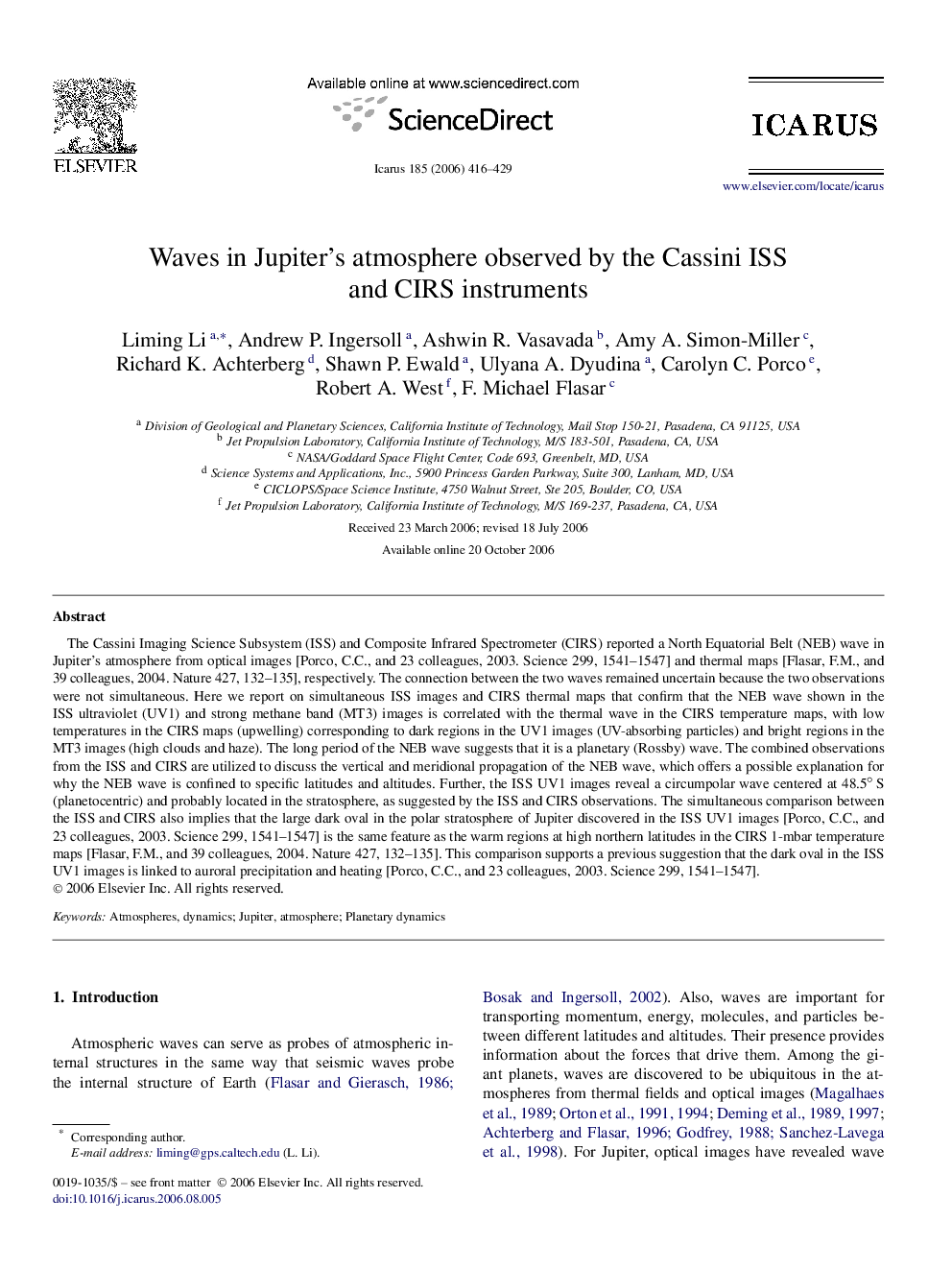| Article ID | Journal | Published Year | Pages | File Type |
|---|---|---|---|---|
| 1775504 | Icarus | 2006 | 14 Pages |
The Cassini Imaging Science Subsystem (ISS) and Composite Infrared Spectrometer (CIRS) reported a North Equatorial Belt (NEB) wave in Jupiter's atmosphere from optical images [Porco, C.C., and 23 colleagues, 2003. Science 299, 1541–1547] and thermal maps [Flasar, F.M., and 39 colleagues, 2004. Nature 427, 132–135], respectively. The connection between the two waves remained uncertain because the two observations were not simultaneous. Here we report on simultaneous ISS images and CIRS thermal maps that confirm that the NEB wave shown in the ISS ultraviolet (UV1) and strong methane band (MT3) images is correlated with the thermal wave in the CIRS temperature maps, with low temperatures in the CIRS maps (upwelling) corresponding to dark regions in the UV1 images (UV-absorbing particles) and bright regions in the MT3 images (high clouds and haze). The long period of the NEB wave suggests that it is a planetary (Rossby) wave. The combined observations from the ISS and CIRS are utilized to discuss the vertical and meridional propagation of the NEB wave, which offers a possible explanation for why the NEB wave is confined to specific latitudes and altitudes. Further, the ISS UV1 images reveal a circumpolar wave centered at 48.5° S (planetocentric) and probably located in the stratosphere, as suggested by the ISS and CIRS observations. The simultaneous comparison between the ISS and CIRS also implies that the large dark oval in the polar stratosphere of Jupiter discovered in the ISS UV1 images [Porco, C.C., and 23 colleagues, 2003. Science 299, 1541–1547] is the same feature as the warm regions at high northern latitudes in the CIRS 1-mbar temperature maps [Flasar, F.M., and 39 colleagues, 2004. Nature 427, 132–135]. This comparison supports a previous suggestion that the dark oval in the ISS UV1 images is linked to auroral precipitation and heating [Porco, C.C., and 23 colleagues, 2003. Science 299, 1541–1547].
